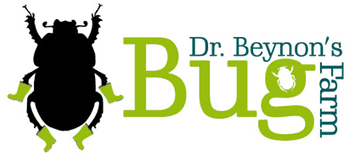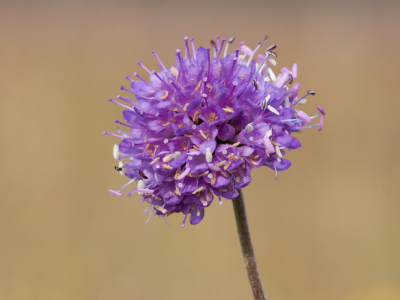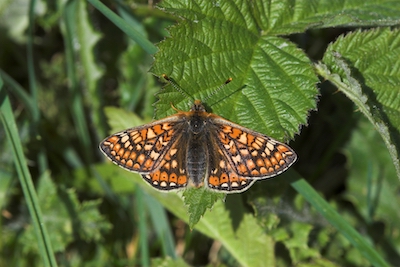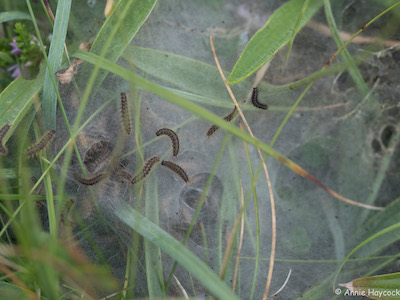Marsh fritillary project
Bringing back the marsh fritillary butterfly to St Davids
In the UK, the marsh fritillary butterfly Euphydryas aurinia has declined by 79% in terms of occurrence since 1976 and 64% in abundance since just 2005. This butterfly is now a species of conservation importance and designated as ‘Vulnerable’ in the UK.
The marsh fritillary butterfly went locally extinct on the St Davids peninsular in 2013. We were deeply saddened by this loss and we wanted to do something about it.
We are extremely lucky that we own, manage or graze enough land across the peninsular to allow us to create at least 40 hectares (around 100 acres) of marsh fritillary habitat within a 1km radius of previous marsh fritillary records – this is the area of core habitat that is required to support marsh fritillaries in the short-term (Fowles, 2005).
In the winter of 2020-2021, we planted 5,000 plugs of the butterfly’s foodplant (Devil’s-bit scabious Succisa pratensis) and scattered over scabious 80,000 seeds. We fenced our land so that we could graze it with our herd of Welsh Black cattle, ponies and goats which help to stop grasses and scrub smothering the scabious plants.
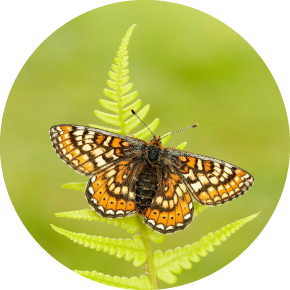
We also carried out a large research project to find out what is the best way to improve the habitat for the marsh fritillary here at The Bug Farm. This long-term fieldwork project will be made available to research students in coming years.
To find out more about the project results and the research project, do watch the project film or visit the project hub at The Bug Farm visitor centre.
The full project report is available on request – please e-mail us if you would like to receive a copy.
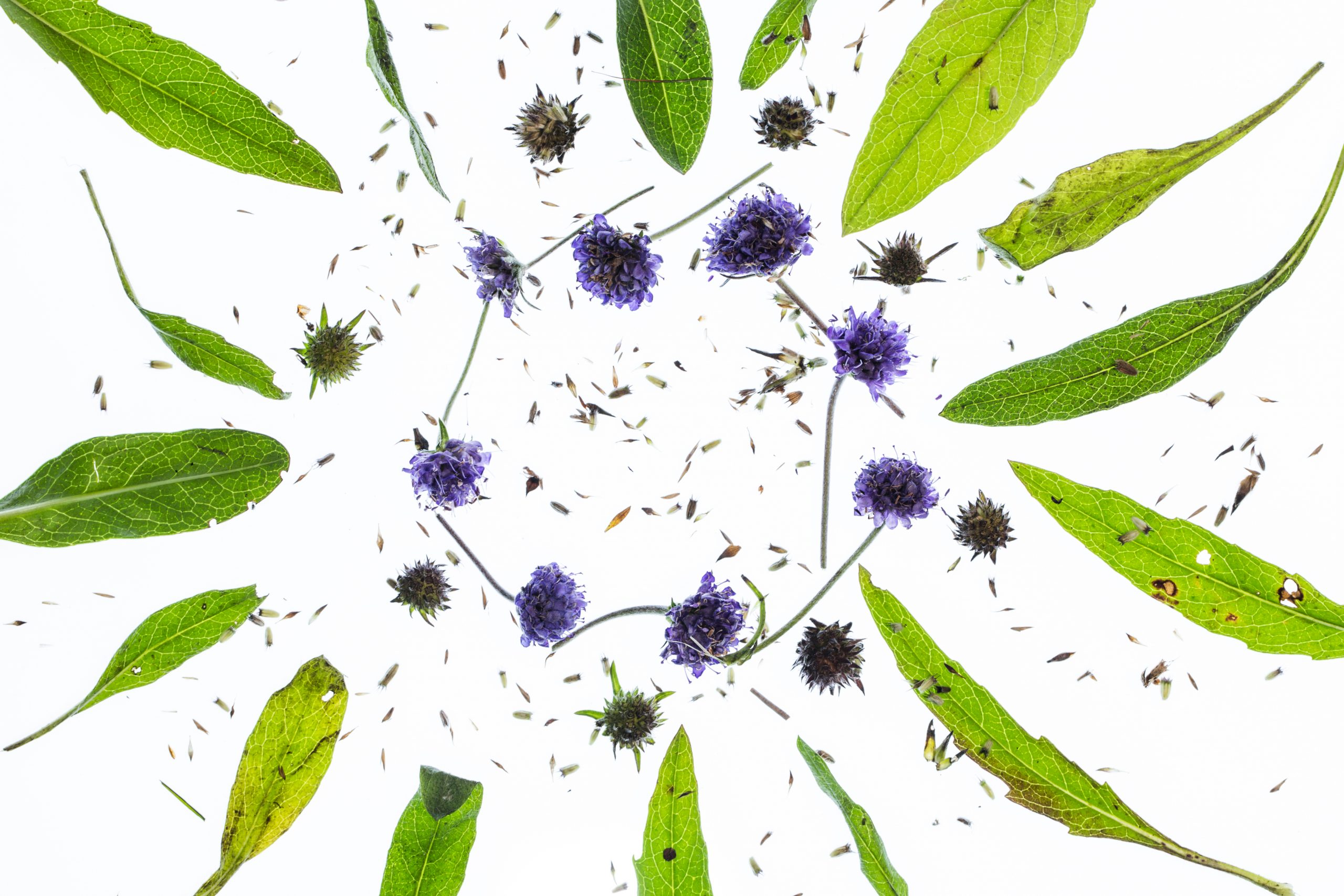
This project has been undertaken through the support of Sustainable Management Scheme – Supporting Natura 2000 Restoration funded by the Welsh Government.
